This photograph of a Caribbean reef octopus guarding her eggs off West Palm Beach, Florida has been announced as Best in Show in the prestigious annual Ocean Art Underwater Photo Contest, now in its 11th year. Photographer Kat Zhou’s entry had also come top in Macro, one of the 14 competition categories.
“Like all other species of octopus, this mother does not eat while she tends to her eggs, and she will die after they hatch,” said Zhou. “It was a bittersweet feeling to watch her protect her eggs, knowing that this sad end was coming!”
Visiting West Palm Beach several times a year for its variety of wide-angle and macro subjects, Zhou had noticed photos of the octopus with her eggs in early March 2022, and was pleased to find her still there later in the month. She observed her on four dives over three weeks near Blue Heron Bridge, though the octopus’s position in relation to the eggs often made photography problematic.
“On the dive that I obtained this shot, there were fewer divers around than normal, and she seemed much calmer as a result,” said Zhou of Octopus Mother.
(Nikon D850 with 105mm macro, Nauticam housing, dual Inon Z330 strobes, BigBlue dive-light. f/29, 1/250th, ISO 250)
Ocean Art is organised by the online Underwater Photography Guide, which commented: “It is clear from this year’s winning images that our community of underwater photographers has dived into a new and exciting post-pandemic era. An unprecedented calibre of photos was ushered in by the lifting of travel restrictions – including our Best in Show image.”
UPG also thanked the sponsors that had enabled it to offer what it says was the largest-ever selection of prizes in an underwater photo contest, valued at more than US $100,000 and consisting mainly of resort and liveaboard diving holidays and photographic equipment.
The addition of a Mobile Phone section brought the number of categories to 14 “to ensure a competitive contest for all levels and disciplines of underwater photography”. The judging panel, including photographers Tony Wu, Mark Strickland and Marty Snyderman, were said to have evaluated thousands of entries from 96 countries in making their selection.
The competition was overseen by UPG Editor-in-Chief Nirupam Nigam, who commented that the winners that emerged had surprised him. “I had expected an ‘Instagram-able’ moment to steal the show. Instead, each image is that of photographic excellence or poetic reflection of the natural world around us. These images will be seared in my mind for years to come.”
Wide Angle
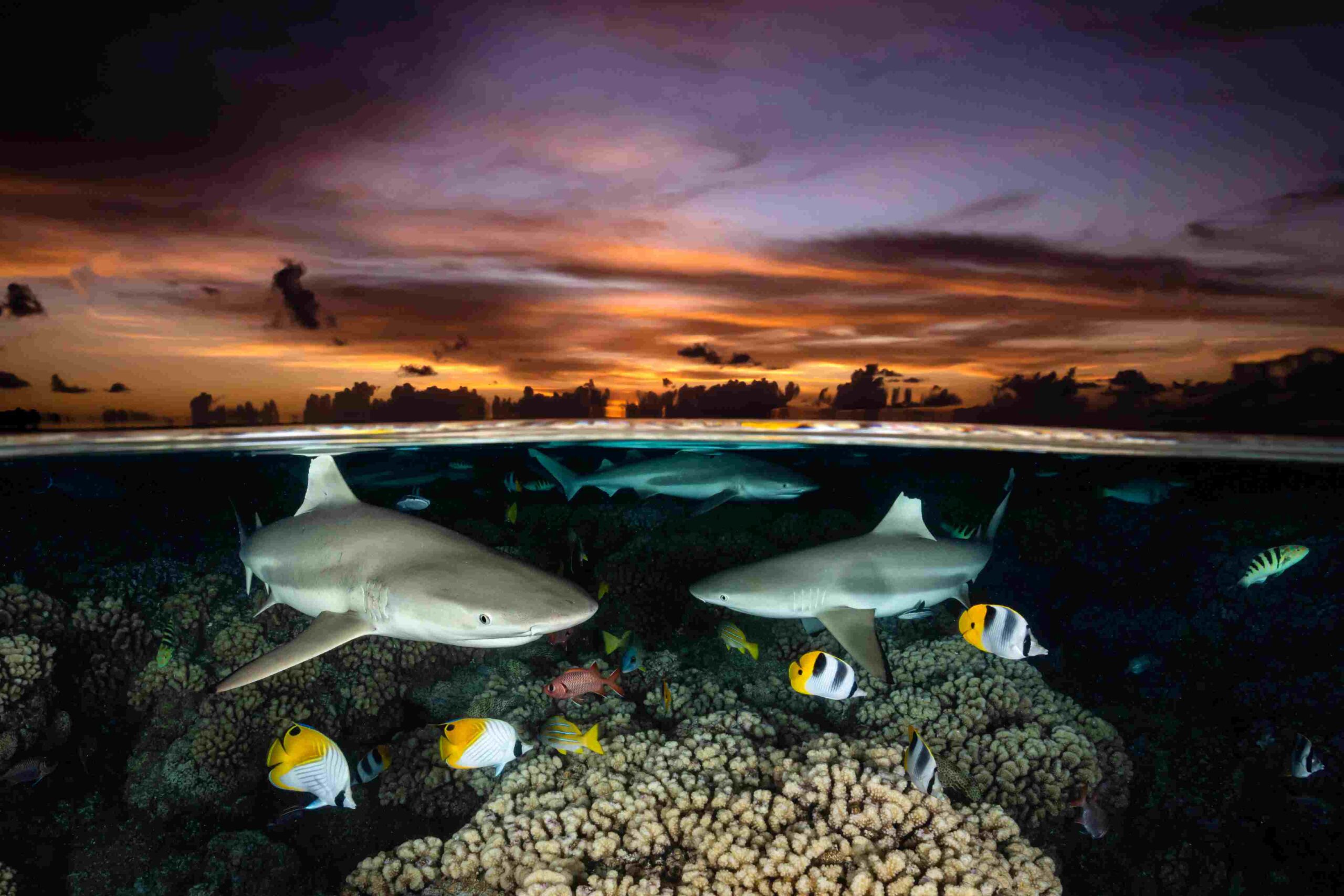
Wide Angle winner was Renee Capozzola with Shark Trio, an over-under image shot on the remote atoll of Fakarava in French Polynesia, a UNESCO Biosphere Reserve. “I was extremely lucky to be there just after the full moon, when a large school of tangs spawned just earlier in shallow water nearby, attracting even more sharks to the area with the heightened activity,” she said.
Although it was getting dark, Capozzola was able to capture the moment by using her strobes under water and a higher shutter-speed.
(Canon 5D Mark IV with 16-35mm F2.8 II, Nauticam housing, dual Sea & Sea YS-D3 strobes. f/18, 1/160th, ISO 500)
Marine Life Behaviour
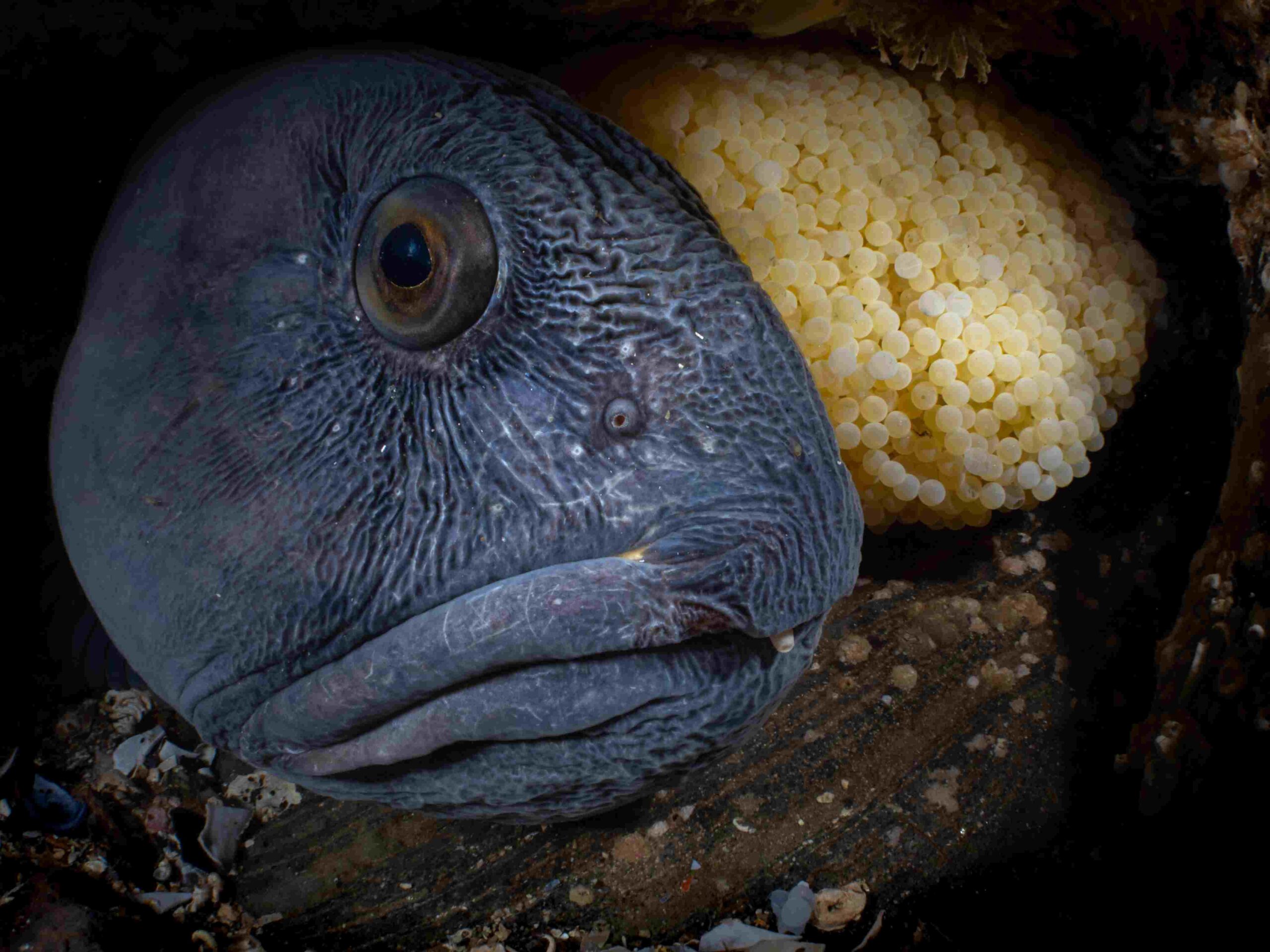
First-placed in Marine Life Behaviour was Nest, taken in Saltstraumen, Norway by Galice Hoarau and showing one of a pair of wolf-fish at the end of the Arctic summer. Females lay a ball of eggs in a small cave in autumn before leaving the male in the nest to guard them until they hatch at the end of spring.
Though unprotected and over-exploited, wolf-fish are an important species in the fjords by virtue of keeping sea urchins from overgrazing the kelp forest.
(Olympus OM-D E-M1 Mk II with 30mm, Nauticam housing, Backscatter Mini strobe & snoot, Inon Z330 strobe,
Nauticam EMWL lens. f/22, 1/250th, ISO 200)
Portrait
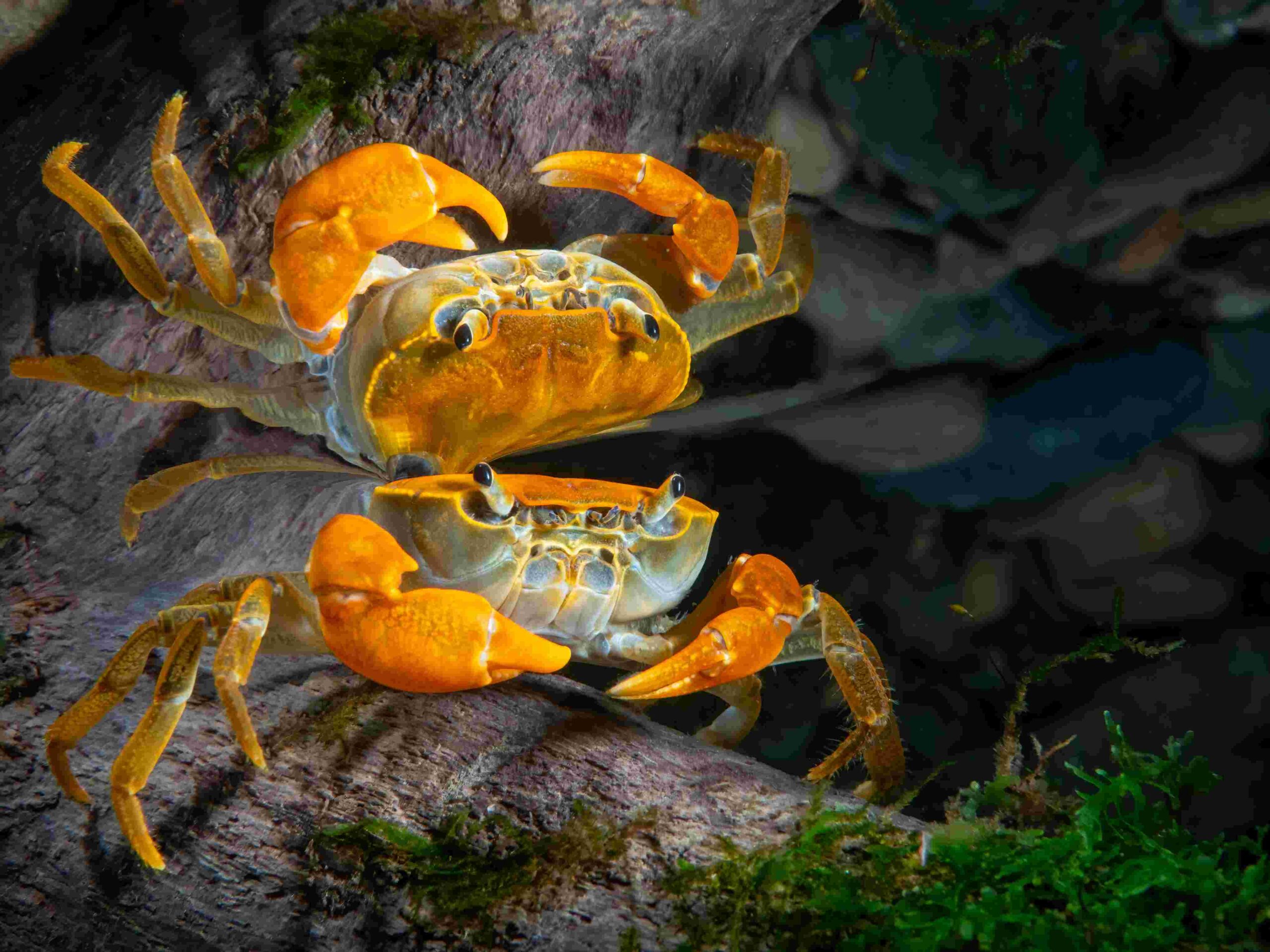
George Kuo-Wei Kao triumphed in the Portrait category with Mirror Reflection. “Since the pandemic, I was depressed because I couldn’t go diving abroad,” he said, and his winning shot was taken in Pinglin, Taiwan. “On the chance of going out, I went to the stream and found beautiful little crabs. So I took my photography equipment and went to different spots every week to observe and try to shoot the ecology of the stream.
“After multiple attempts in the span of several months, I was able to capture the perfect reflection, which was one of my goals. When I shot this photo, I knew I’d got it!”
(Olympus EM1 Mk II with 30mm macro, Inon Z330, Retra LSD snoot, f/13, 1/250th, ISO 400)
Coldwater

The Rare Spotted Hand-Fish from Tasmania brought Nicolas Remy first place in the Coldwater category. These Critically Endangered anglerfish appear to “walk” on the seabed on their hand-like pectoral fins. They are thought to number fewer than 3,000 and, though once common in Tasmania, are now found only in a few of its rivers. Their decline is attributed to pollution and invasive seastars that eat their eggs.
During the last Tasmanian winter, Remy spent nine hours diving a patch of the Derwent River in Hobart where he knew that a few specimens lived. “The water was dark and silty with about 2m visibility, and I used two strobes with snoots to illuminate only the handfish and less of the floating particles,” he said.
(Nikon D810 with 105mm AF-S macro, Nauticam housing, dual Retra Flash Pro, dual Retra LSD snoots, Nauticam EMWL-1 wet lens, f/18, 1/200th, ISO 640)
Nudibranchs
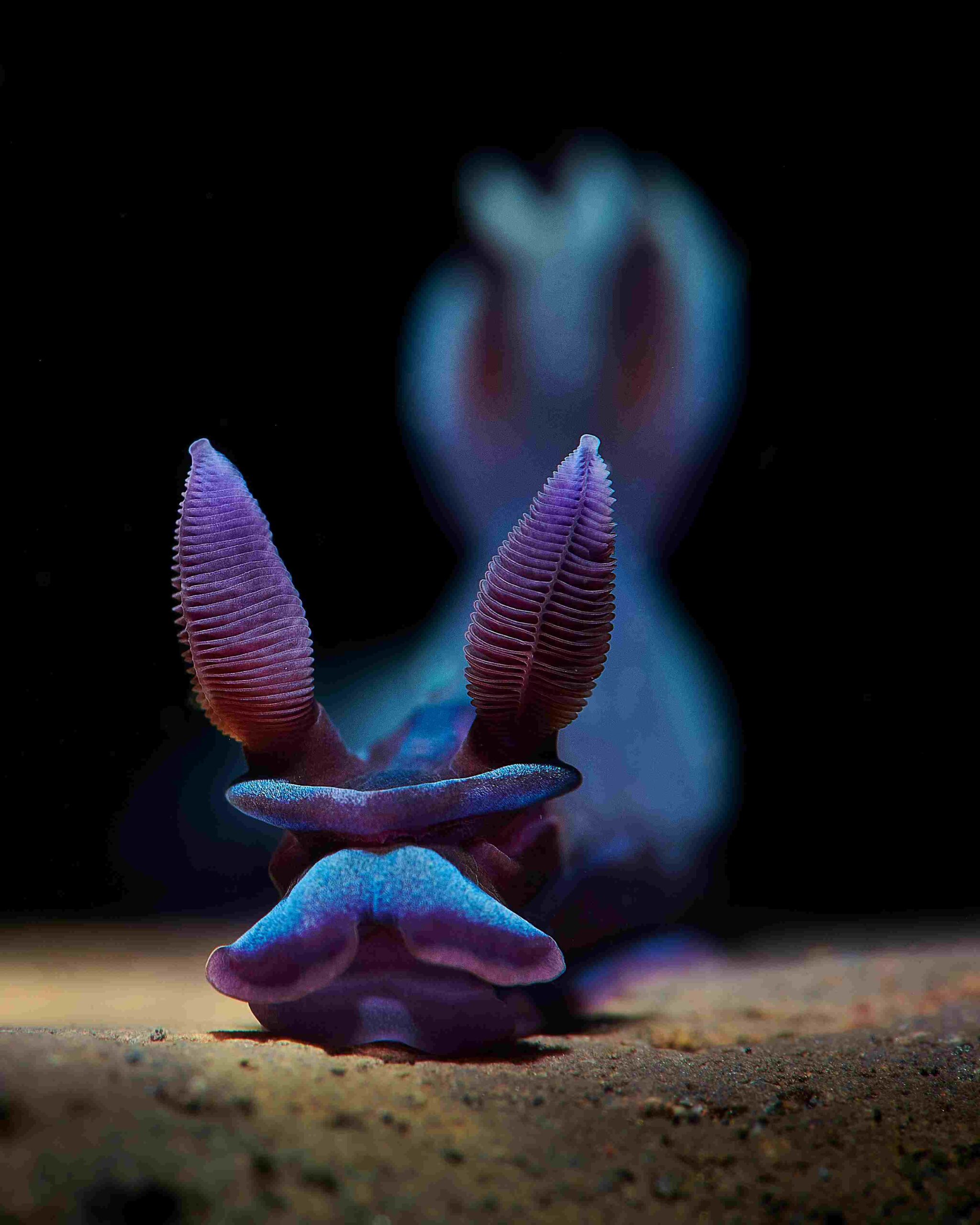
During the coronavirus pandemic, Nudibranchs category winner Aleksei Permiakov and his wife were “stuck in Bali”, Indonesia, and made a series of dives at the Drop Off site in Tulamben. “Tambja morosa is a relatively big nudi and usually I would shoot it without a wet lens, but I decided to focus more on rhinophores and its amazing texture,” he said. He cropped and mirrored the image and sharpened those rhinophores to underscore the title Ribbed.
(Nikon D850 with Nikkor 105mm f2.8 VR, Nauticam housing, Backscatter MF-01 strobe with snoot, Nauticam SMC wet lens, f/22, 1/200th, ISO 125)
Blackwater
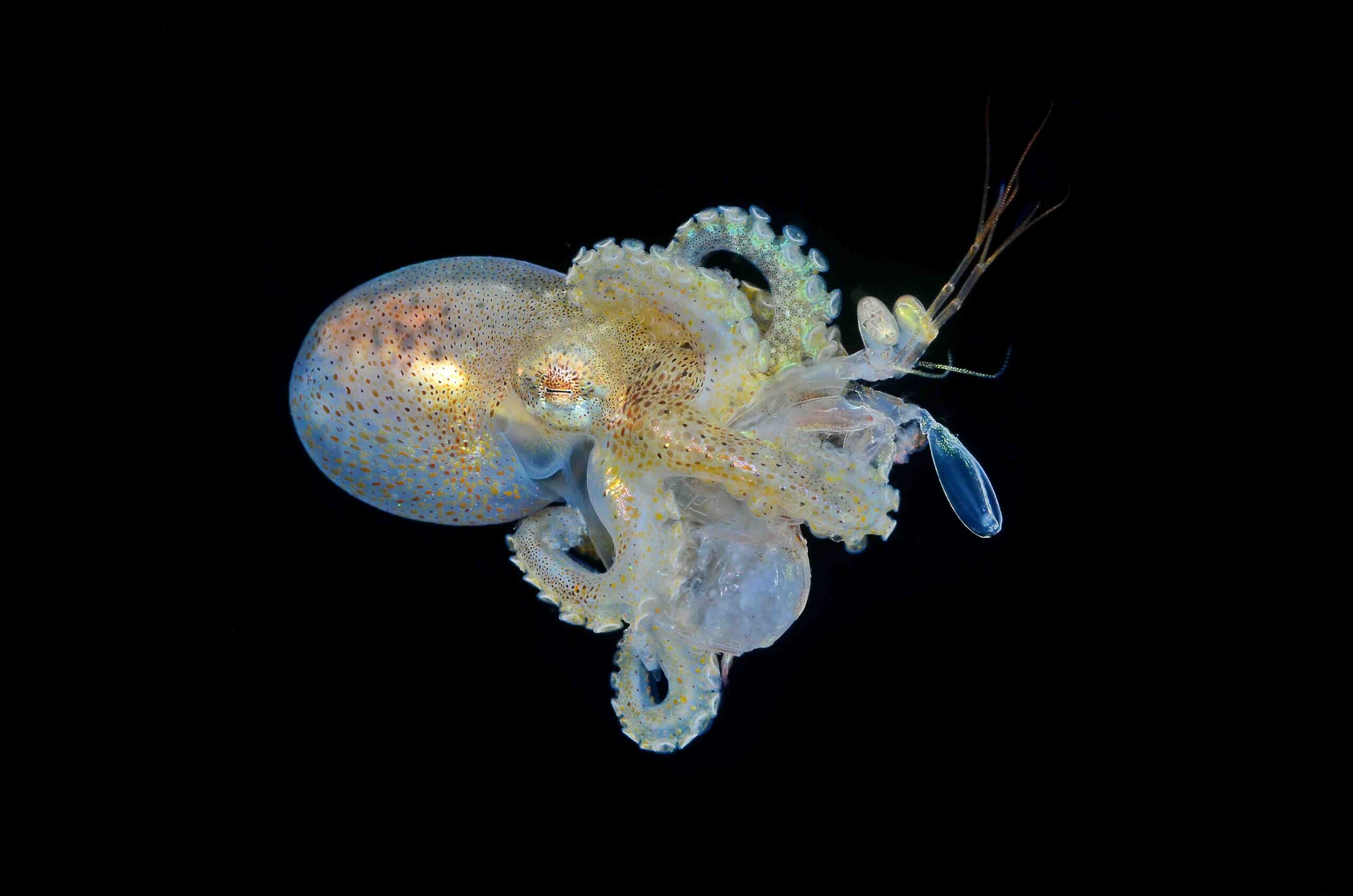
The Blackwater category winner was Octopus Attack by Dennis Corpuz, showing a hungry paralarva octopus ambushing a larval mantis shrimp in Janao Bay in the Philippines. “We travelled a few kilometres away from the mainland of Anilao,” said Corpuz. “We set up a buoy with a dropline attached with high-powered lights at 5, 10, 15 and 20m in 200-1,000m deep water.
“We regularly observe the vertical migration of all deep-sea living creatures and try to photograph their behaviour.”
(Nikon D7000 with 105mm macro, dual Sea & Sea YS-250 strobes, f/25, 1/320th, ISO 200)
Underwater Conservation

The disturbing Underwater Conservation winner A Sad Catch was captured by Lawrence Alex Wu: “Big or small, our ecosystem is a fine balance and all its inhabitants are important to the well-being of the Earth,” he commented. “Seahorses have been fished to near-extinction, mainly for medicinal use… but not scientifically proven to have any medicinal properties.”
Underwater Art
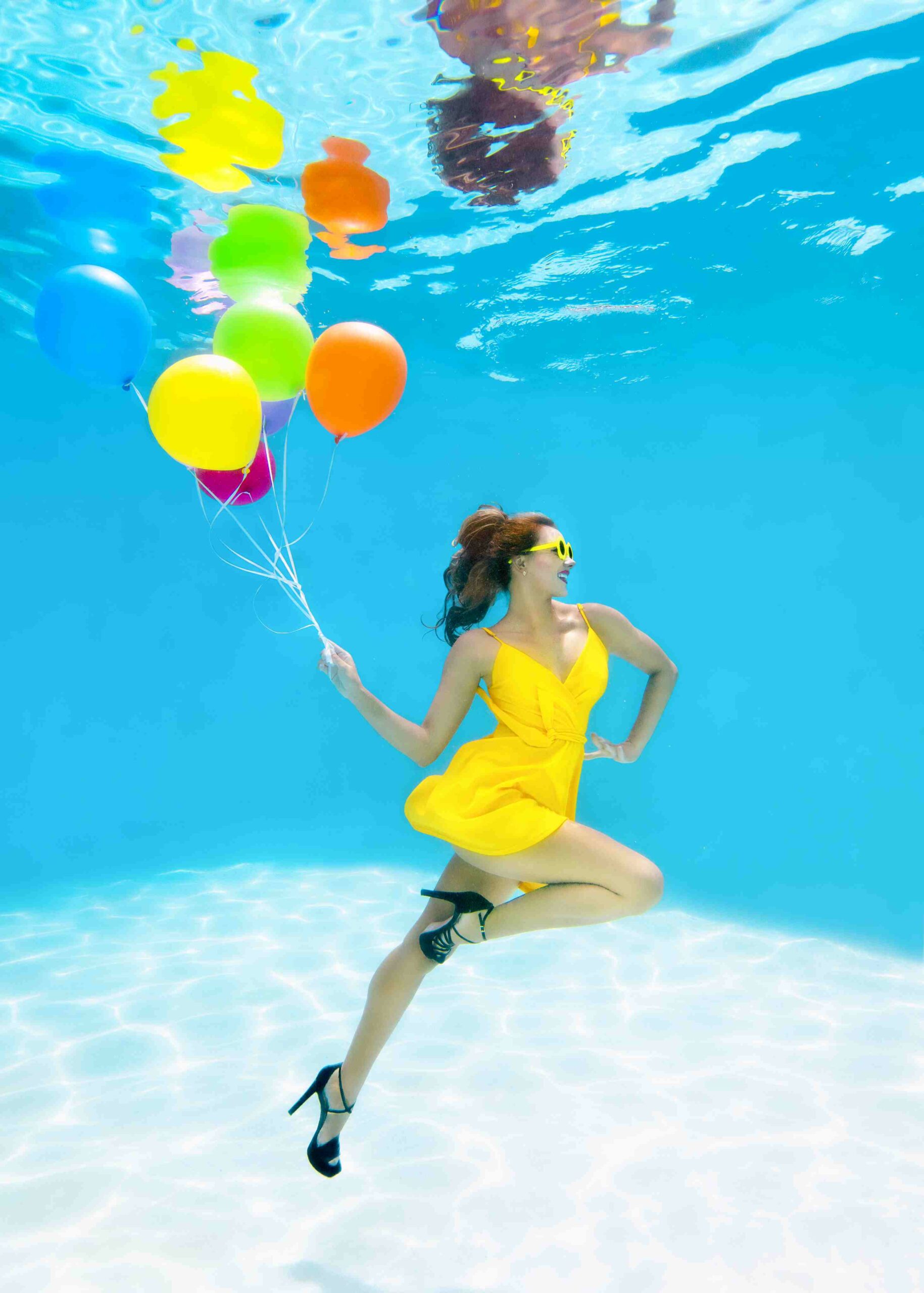
In contrast was the winning shot in the Underwater Art category by Sarah Teveldal, who worked with underwater performer, freediver and four-time world champion synchronised swimmer Kristina Makushenko in a Miami pool to obtain A Happy Bunch. “Balloons can be difficult to work with under water, but we are both underwater enthusiasts who appreciate a challenge!” explained Teveldal.
“The trick is achieving a nearly neutral buoyancy. To do this, you must fill them with the right water-to-air ratio, which is mostly water and just a tiny breath of air.”
Makushenko had difficulty getting the first set of balloons into the right position because they were negatively buoyant, but a a little added air in the second set did the trick.
“While it might be a slightly ’ordinary’ image above water, we were ecstatic to bring this concept to life in the water – our preferred medium that always adds a touch of magic, whimsicality and unpredictability!” said Teveldahl.
(Canon 5D Mk IV with 16-35mm, Sea & Sea housing, f/13, 1/250th, ISO 400)
Black & White
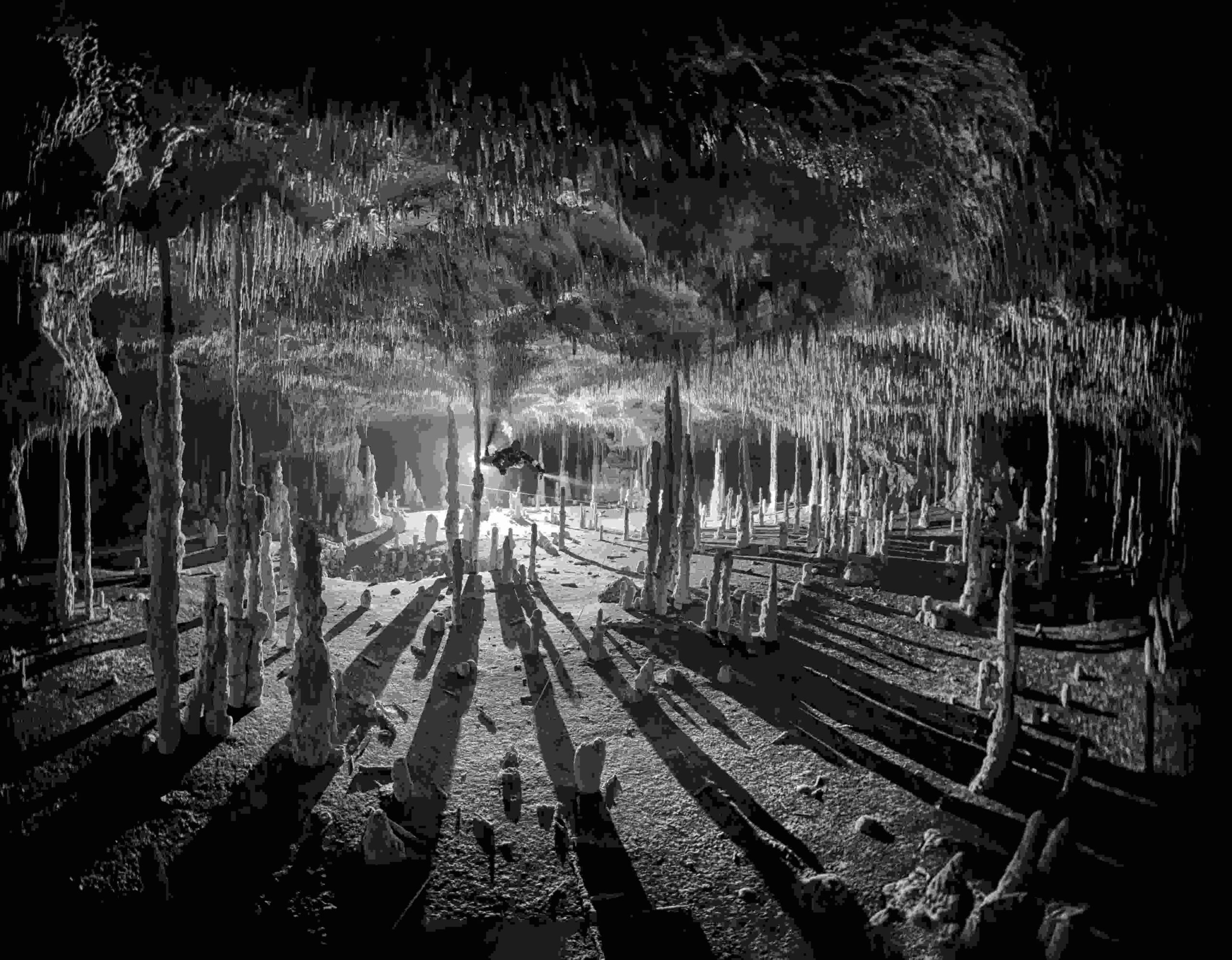
Long Shadows, taken by Martin Broen in Cenote Dos Pisos in Yucatan, Mexico, was the Black & White category winner. “Getting further away from the exit to surface and safety, through the labyrinth of pitch-black tunnels, you get to see places with incredible pristine decorations,” he said.
“These tunnels got bigger when the caves were flooded and were decorated by the slow dripping of the calcite when the caves are dry. This happened over multiple cycles, each lasting 100,000 years!
“And in this case the tunnel formed in a bedding plane with thousands of tiny stalactites in the ceiling contrasting the few tall stalagmites in the floor that creates a labyrinth in itself and projects those beautiful long shadows.” The shot was taken with a single-source 15.000-lumen video-light to create the effect of the shadows converging towards the diver’s position.
(Sony A7R III with Canon 8-15mm, Nauticam housing, BigBlue lights, f/4.5, 1/15th, ISO 5000)
Compact Wide Angle
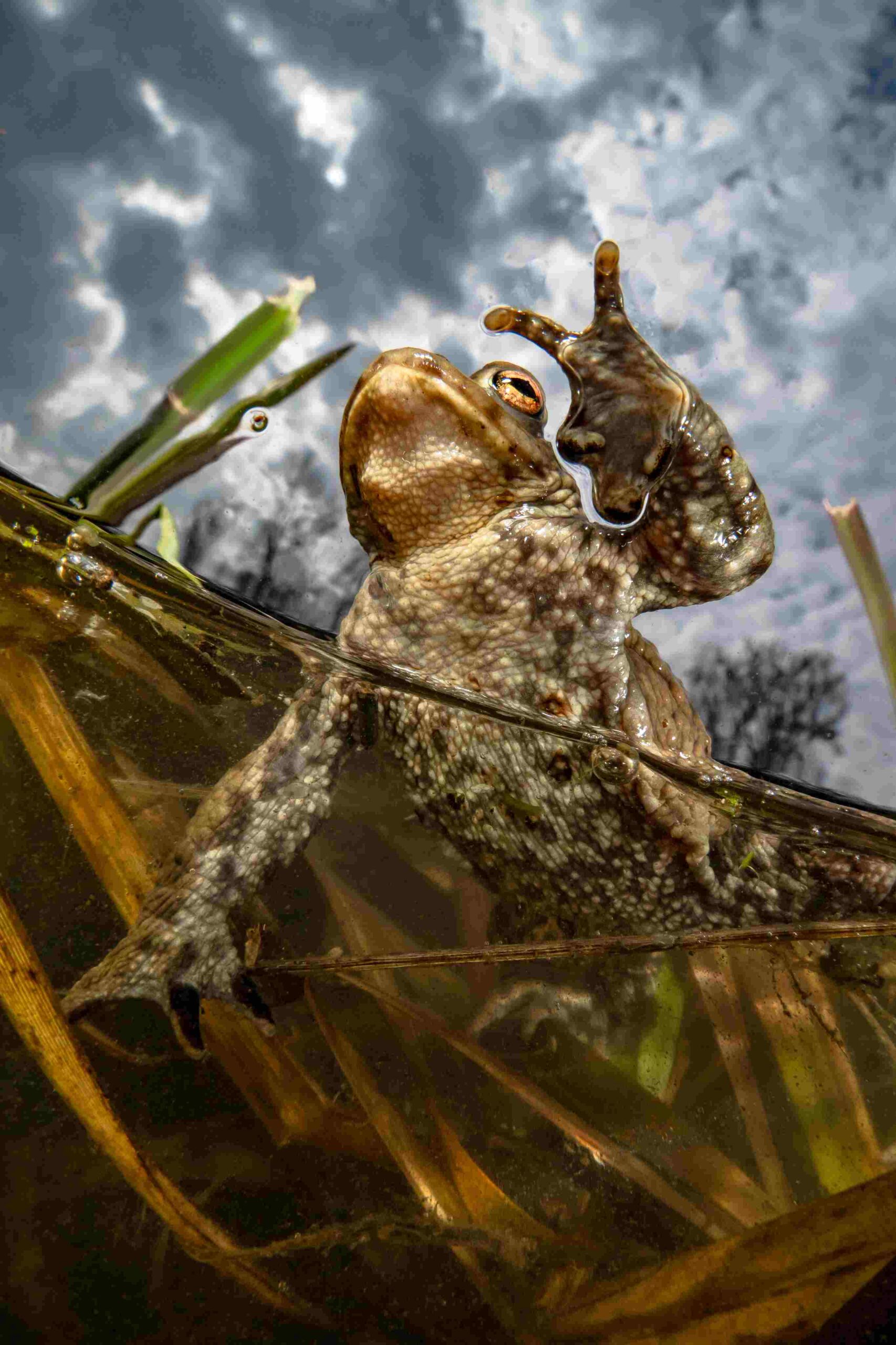
Peace by Enrico Somogyi came first in the Compact Wide Angle category and records the annual March mating time for toads in Leipzig, Germany. “It lasts only a few days and only at this time is it possible to get very close to them. Normally they are very shy.
“I was trying to get a split-shot with this toad when he started to crawl on my small dome-port. I got some pics from this action and this one was my favourite.”
(Sony RX100 Mk VII, Fantasea housing, Sony fisheye converter, 4in dome, dual Backscatter Miniflash MF1, f/8, 1/2000th, ISO 160)
Compact Macro
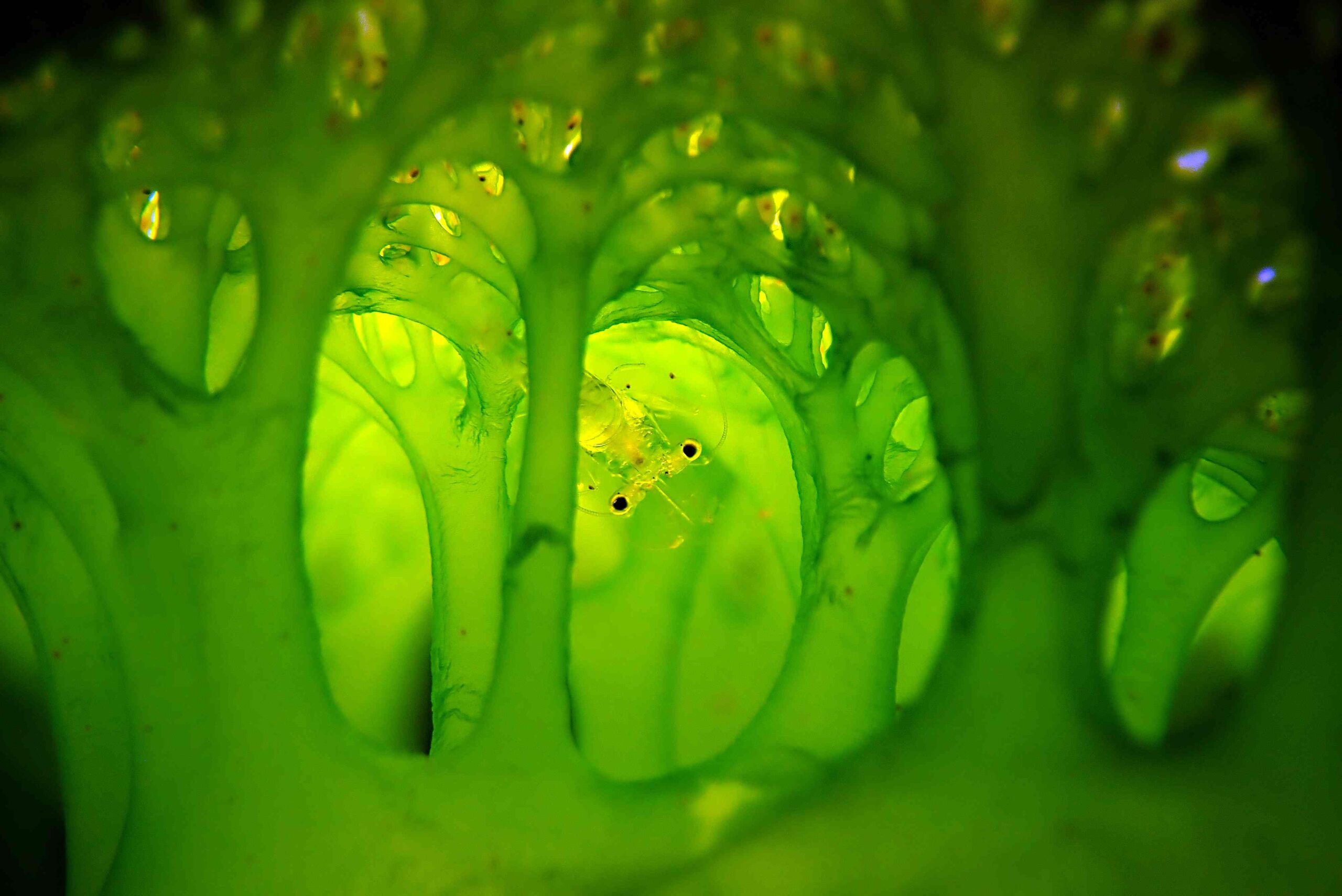
Compact Macro saw Eunhee Cho’s ET The Extra-Terrestrial, taken in Dauin, Negros Oriental in the Philippines, win first place. “I considered filming for a short time without strengthening the light because the sea-squirt, which does not like the heat, narrowed the entrance right away when I started filming,” she said. “Also, shrimp are sensitive to sea-squirts’ movements, so I tried to film calmly without rushing.
“From the moment I found the shrimp in the sea-squirt until just before the sea-squirt entrance was closed, this cute little shrimp kept an eye on me without much movement. It was as if this shrimp understood my mind to take pictures while being pressed for time, and I thought of ET, the big-eyed alien in the movie I saw as a child.
“It was a lucky day when a small sea creature was considerate of me and I was able to shoot. So macro is a small but great world!“
(Olympus TG-6, with PT-059 housing, Weefine SmartFocus 1000FR, Inon UCL-67 M67 close-up lens, f/3.9, 1/500th, ISO 100)
Compact Behaviour
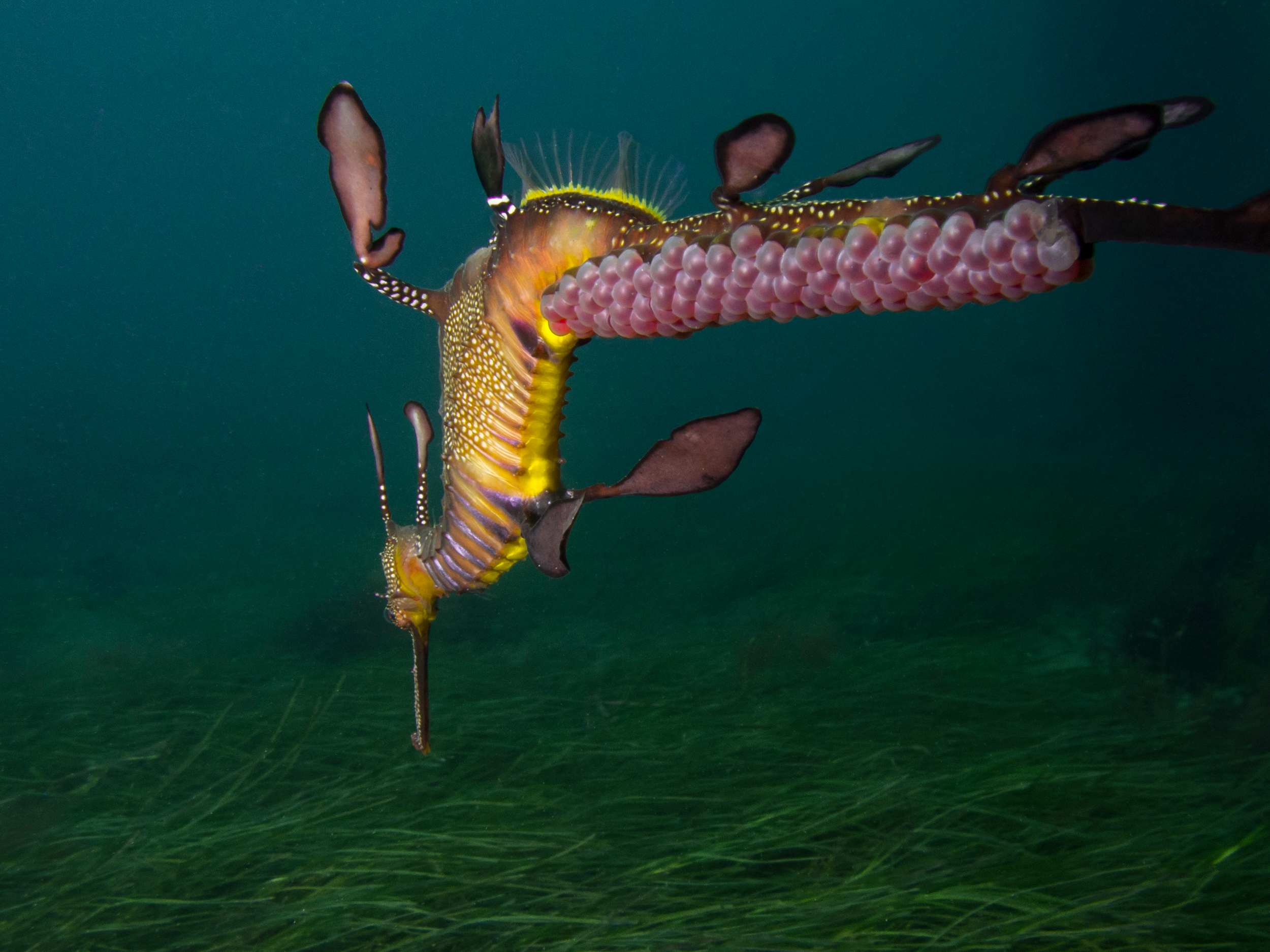
PT Hirschfield reckons that heeding the Ocean Art judges’ comments last year helped him to win Compact Behaviour with A Male Weedy Seadragon Carries Pink Eggs On Its Tail. The advice to competitors had been to find new ways to photograph common subjects, which he did at Flinders Pier in Victoria, Australia.
“While definitely ‘other-worldly’, male weedy seadragons carrying bright pink eggs on their tail are not a particularly unusual subject on the south-east coast of Australia,” said Hirschfield. “These slow-moving animals are typically very happy to pose side-on at close range in only around 4-6m depth, but I loved playing with the principles of photography in making this image.
“I observed the ‘rule of thirds’ and the principle of ‘edge of consciousness’, but broke the ‘rules’ of shooting the subject from the front with sharp focus on the eye. Shooting this dragon from the back with its eye down and not as a focal point revealed an angle of this bright beastie that’s rarely seen.
“The egg closest to the top right-hand side appears to have already hatched (which I did not realise until I saw the image at home on the computer), with almost 90 other eggs nearing their hatching time.
“I love the yellows, purples, blacks, whites and pinks of the subject against the backdrop blue of the water and green of the seagrass. I also like the way the ‘paddles’ on the dragon are outlined in black, which is more obvious from this angle than when photographed from other angles.”
(Canon G12, YS-D3 Strobe, Fix Neo 1500 light, f/8, 1/80th, ISO 100)
Mobile Phone

Finally, with Cassiopea in the Blue in the new Mobile Phone category, Buzzichelli Alessandro captured the sudden appearance of hundreds of jellyfish at Cala Liberotto, Sardinia: “The water was very transparent and the sunlight illuminated the scene,” he said.
(iPhone7, Haoguduo phone case)
All the winning Ocean Art photos, including the top three placings and the many Highly Commended images, can be seen at the UPG site. Details of entry to the 2023 competition have yet to be announced.
Also on Divernet: Fighting Pike Stand Out In Ocean Art Contest, Octopus Selfie Scoops Ocean Art Pool

